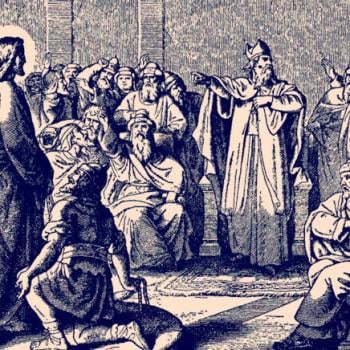The Federal Reserve System, also known as “the Fed,” is the Central Bank of the United States of America. On December 23, 1913, President Woodrow Wilson signed the Federal Reserve Act into law. The Congress created the Federal Reserve in an effort to stabilize the nation’s monetary and financial systems. Nearly a century later, the Federal Reserve has responsibilities in four major categories: 
• Monetary policy – Influence money and credit throughout the economy to support stable prices and full employment.
• Bank regulation – Supervise and regulate banks and financial institutions to ensure that the banking and financial sector is safe and sound, which protects consumer credit rights.
• Manage systemic risk – Influence factors that affect the financial system reduce market fluctuations.
• Oversee nation’s payment systems – Perform financial services for the U.S. government and domestic and foreign financial institutions. Play a significant role in oversight and operations of payment systems.
What is the Federal Reserve?
Prior to 1913, the United States lacked a formal entity that would study and implement monetary policy. Market fluctuations had created economic instability that caused the public to mistrust the banking system. Creation of the Federal Reserve as an independent organization has established its authority to operate without influence from the President, although it is subject to Congressional oversight. Federal Reserve operations are reviewed by the Congress at regular intervals.
A network of 12 regional Federal Reserve Banks, which are located in major cities, operates under the direct supervision of the Board of Governors. As the operating arm of the central bank, the Reserve Banks perform most of the work of the Federal Reserve. These 12 banks generate income from four primary sources:
• Services provided to member banks
• Interest earned on the government securities that are acquired through normal operations
• Income from foreign currency holdings
• Interest on loans to depository institutions
Day-to-day operations, such as economic research and information gathering, are financed through these income streams. All profits are sent to the United States Treasury.
The Federal Reserve System includes the Federal Open Market Committee, established in 1935. As the policy-making branch of the Federal Reserve, the FOMC makes decisions concerning interest rates and other important monetary policies. The Fed Chairman also serves as the Chairman of the FOMC. The voting members of the FOMC are the seven members of the Board of Governors, the presidents of the four other Reserve Banks and the president of the Federal Reserve Bank of New York. All presidents of the Reserve Banks participate in the FOMC policy discussions even if they are not voting members.
History of the Federal Reserve
1913: Birth of the Federal Reserve
Debate on the Glass-Willis proposal began in December 1912. A full year of work was invested to deliver a bill that President Woodrow Wilson would sign on December 23, 1913. The Federal Reserve Act was considered a classic example of compromise since it created a “decentralized central bank” that was designed to balance the competing interests of the private banks and populist sentiment.
1914: Operations Begin
Eleven months of planning included selection of the 12 cities that would host the regional reserve banks. The new operation would get underway just as hostilities in Europe erupted at the start of World War I.
1935: Creation of the Federal Open Market Committee
Significant economic events dictated further changes to the structure of the Federal Reserve. The Banking Act of 1935 required that the Federal Open Market Committee became a separate legal entity. The Treasury Secretary and Comptroller of the Currency would no longer be part of the Federal Reserve governing board. All member terms would be set at 14 years. After World War II, Congress signed the Employment Act and added the goal of maximum employment to the list of the Fed’s responsibilities.
1956: Bank Holding Company Act
Congress signed the Bank Holding Company Act to name the Federal Reserve as the regulator over all bank holding companies that owned more than one bank.
1978: The Humphrey-Hawkins Act
Under this act, Congress requires the Fed chairman to report to the Congress twice each year concerning the Fed’s monetary objectives and policy goals.
Federal Reserve Board
The Federal Reserve receives oversight from a government agency in Washington, D.C., which is known as the Board of Governors of the Federal Reserve. These seven presidential appointees serve one 14-year term. All board members must pass the Senate confirmation process. The chairman of the board and a vice chairman are appointed by the President and approved by the Senate for four-year terms. Reappointments are possible for these two positions as well.
All appointments to the Board of Governors must create a fair representation of the industrial, agricultural, financial and commercial interests across the nation’s geographical divisions. No two governors can be appointed from the same Federal Reserve District.
Appointments of the governors are staggered so that one term expires each January 31 of an even-numbered year. A governor who completes a full 14-year term cannot be reappointed. A replacement governor who serves an unexpired term is permitted to be reappointed for a full 14-year term.
A governor on the Federal Reserve Board cannot be removed from office for differing policy views. Staggered terms create insulation of the board from political pressures from outside sources.
The Chairman and Vice Chairman of the Federal Reserve are chosen from the existing board. Terms of four years permit these individuals to return to governorships unless the term expires. The Chairman is the public spokesperson and representative of the Federal Reserve Board and manages the Board’s support staff. At Board meetings, the Chairman presides over the proceedings. Presidents have affirmed the apolitical nature of the board by appointing the same individual as Board Chairman over the years.
Congress determines the annual salaries paid to the Board members of the Federal Reserve. For 2012, the Chairman will earn $199,700. All other Board members, including the Vice Chairman, will earn $179,700. Each year the Congress determines the annual salaries for the next year during the budget process.
For an even more thorough explanation of the Federal Reserve, explore their website www.FederalReserve.gov.















